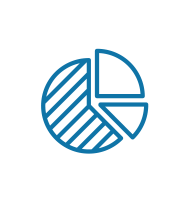Select your target
TARGET 4.1
Free, equitable and quality primary and secondary education
By 2030, ensure that all girls and boys complete free, equitable and quality primary and secondary education leading to relevant and effective learning outcomes.
Indicator 4.1.1
Proportion of children and young people (a) in Grade 2 or 3; (b) at the end of primary education; and (c) at the end of lower secondary education achieving at least a minimum proficiency level in (i) reading and (ii) mathematics, by sex.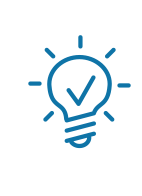 CONCEPT
CONCEPT
Target 4.1 covers the quality of primary and lower secondary education. The key concepts to measure include the quality of education and learning in two subject areas at the beginning and the end of primary education and at the end of lower secondary education.Minimum proficiency level (MPL) is the benchmark of basic knowledge in a domain (mathematics,reading, etc.) measured through learning assessments.
 DEFINITION
DEFINITION
Percentage of children and young people in Grade 2 or 3 of primary education, at the end of primary education and at the end of lower secondary education achieving at least a minimum proficiency level in (i) reading and (ii) mathematics. The minimum proficiency level will be measured relative to new common reading and mathematics scales currently in development.The current indicator shows data published by each of the agencies and organizations specialised in cross-national learning assessments. Data are comparable only for countries which participated in the same assessment. Methods to compare the results from different cross-national learning assessments are in development.
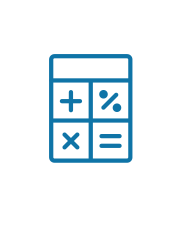 CALCULATION METHOD
CALCULATION METHOD
The indicator is calculated as the percentage of children and young people at the relevant stage of education achieving or exceeding a pre-defined proficiency level in a given subject.
INTERPRETATION
The three measurement points will have their own established minimum standard. There is only one threshold that divides students into (a) below or (b) at or above minimum proficiency levels. Below minimum is the percentage of students who do not achieve a minimum proficiency level as established by countries according to globally-defined minimum competencies. At or above minimum is the percentage of students who have achieved at least the minimum proficiency level as defined in the assessment.
UIS Information Paper No. 48 (2017d) discusses the possibilities and limitations of developing a global assessment strategy for Indicator 4.1.1, taking into account both the technical and political dimensions of cross-national assessments.
 DATA SOURCES
DATA SOURCES
Various cross-national learning assessments including: PASEC, PIRLS, PISA, SACMEQ, TERCE and TIMSS.
The document “Metadata for the global and thematic indicators for the follow-up and review of SDG 4 and Education 2030” is the main UIS reference for information on each SDG 4 indicator. The metadata document, updated every year, provides a detailed description of the indicators, as well as their calculation methods, data sources and limitations (UIS, 2017a).
 METHODOLOGICAL CHALLENGES
METHODOLOGICAL CHALLENGES
There are three key challenges in the production of learning outcomes indicators on a cross-nationally comparable basis. First, national, regional and global data on basic competencies in literacy and numeracy are frequently collected but cannot be used in an integrated manner to create a global picture of learning. For instance, the proficiency of Brazilian students can be compared to the Paraguayan students as both countries have participated in the same regional assessment. However, their proficiency cannot be compared to South African students because the regional assessment in which South Africa participates does not use the same framework, which is based on different concepts and methods of how to assess learning.
Second, if national and regional data are to be used for global monitoring of learning, shared technical standards must be developed to ensure that the data are of similar quality.
Third, solutions must take into account multiple viewpoints: identifying relevant areas of learning that can and should be measured globally; conceptualising how national and regional data can help inform global measurement; and finally, striking an appropriate balance between global competencies and the role of local influences and goals on education.
The goal of the UIS is to develop global content frameworks for reference to ensure that all children are taught what they need, to improve the quality of data and to report under common metrics. This work will support governments to measure effectively and monitor student learning outcomes in mathematics and reading against SDG Indicator 4.1.1 over time and to utilise the data for making informed policy decisions. A further goal is to support the use of existing national and cross-national assessments to facilitate the measurement and reporting of learning outcomes, rather than requiring a single assessment to be used by all countries for SDG reporting purposes. In addition to the challenges mentioned above, it is important to note a significant limitation of the data available. Assessments are typically administered within school systems, referred to as school-based learning assessments. The current indicators cover only children in school. Therefore, children who are out of school are not included in this indicator. Assessing competencies of children and young people who are out of school would require household-based surveys.
The UIS has developed a framework to guide the design and implementation of learning assessments to support the production of measures of learning outcomes according to the highest-quality technical standards. Principles of Good Practice in Learning Assessment is a good reference for data quality on learning outcomes (UIS and ACER, 2017).
TARGET 4.2
Quality early childhood development, care and pre-primary education
By 2030, ensure that all girls and boys have access to quality early childhood development, care and pre-primary education so that they are ready for primary education.
Indicator 4.2.1
Proportion of children under 5 years of age who are developmentally on track in health, learning and psychosocial well-being, by sex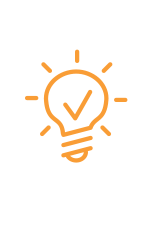 CONCEPT
CONCEPT
Key concepts to measure include quality of care and education, access to programmes and child development and learning at the start of school. Measuring early childhood development is complicated but possible with sufficient technical consultation and operational support to countries to generate reliable data.
 DEFINITION
DEFINITION
Currently there is no globally-accepted definition of ‘developmentally on track’, and consequently, there are no further definitions for the indicator so far. Relevant information for this indicator can be found in MICS’ Early Childhood Development Index (ECDI) that presently defines ‘on track’ as the percentage of children aged 36 to 59 months who are developmentally on track in at least three of the following four domains:
- literacy-numeracy—at least two of the following are true: can identify/name at least 10 letters of the alphabet, can read at least 4 simple words, and can recognise and name all numbers from 1 to 10;
- physical—one or both of the following are true: can pick up small objects easily and is generally well enough to play;
- socio-emotional—at least two of the following are true: gets along well with other children, does not kick, bite or hit other children, and is not easily distracted; and
- learning —one or both of the following are true: can follow simple instructions on how to do something correctly and, when given something to do, is able to do it independently.
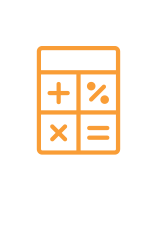 CALCULATION METHOD
CALCULATION METHOD
In MICS ECDI, the indicator is calculated as the percentage of children aged 36 to 59 months demonstrating age-appropriate levels of development in the areas being measured. A commonly-accepted definition of ‘on track’ has not yet been developed using national and regionally-developed standards for children’s learning and development.
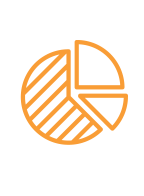 INTERPRETATION
INTERPRETATION
A high value indicates a large number of young children are well prepared for starting primary school in the areas of health, learning and psychosocial well-being.
 DATA SOURCES
DATA SOURCES
Measures to capture children’s early childhood experiences have been used in multiple countries in representative samples, such as: MICS ECDI, UNICEF West and Central African Regional Office (WCARO) Prototype in West Africa, Programa Regional de Indicadores de Desarrollo Infantil (PRIDI) in Latin America, the East Asia and Pacific Child Development Scales, the Early Development Index and the Early Human Capacity Index. Newly-developed scales with two to three representative samples include the Measuring Early Learning Quality and Outcomes Scale (MELQO) and the International Development and Early Learning Assessment (IDELA).
UNICEF assists countries in collecting and analysing data in order to fill data gaps for monitoring the situation of children and women through its international household-survey initiative, the MICS. For the fourth round of MICS (MICS 4), data collection was expanded to include an ECDI that aims to measure the developmental status of children within four domains: literacy-numeracy, physical, social-emotional development and learning.
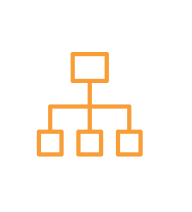 METHODOLOGICAL CHALLENGES
METHODOLOGICAL CHALLENGES
Further methodological development work will be needed to ensure that the proposed measure reflects a commonly-agreed upon definition of ‘on track’ that is aligned with national standards, is relevant to children in all parts of the world and accurately reflects ‘developmentally on track’ in all countries. This requires establishing normative developmental patterns, which has not yet taken place in most countries. In addition, more countries will need to include questions about early childhood in their national household surveys or to participate in one of the international projects generating data for this indicator.
Indicator 4.2.2
Participation rate in organized learning (one year before the official primary entry age), by sex CONCEPT
CONCEPT
This indicator measures children’s exposure to organized learning activities in the year prior to the start of primary school. An organized learning programme is one which consists of a coherent set or sequence of educational activities designed with the intention of achieving pre-determined learning outcomes or the accomplishment of a specific set of educational tasks. Early childhood and primary education programmes are examples of organized learning programmes. The official primary entry age is the age at which children are obliged to start primary education according to national legislation or policies.
 DEFINITION
DEFINITION
The participation rate in organized learning (one year before the official primary entry age) is defined as the percentage of children of the given age who participate in one or more organized learning programmes, including programmes which offer a combination of education and care. Participation in early childhood and in primary education are both included. The age will vary by country depending on the official age for entry to primary education.
 CALCULATION METHOD
CALCULATION METHOD
The number of children in the relevant age group who participate in an organized learning programme is expressed as a percentage of the total population of the same age.
 INTERPRETATION
INTERPRETATION
A high value of the indicator shows a high degree of participation in organized learning immediately before the official entrance age to primary education.
 DATA SOURCES
DATA SOURCES
The UIS produces time series based on enrolment data reported by Ministries of Education or national statistical offices and population estimates produced by the UN Population Division. Enrolment data are collected through the annual UIS Survey of Formal Education. Data are reported according to the levels of education defined in ISCED to ensure international comparability of resulting indicators. The indicator can also be calculated from household surveys and population censuses that collect data on attendance in early childhood and primary education by single year of age.
 METHODOLOGICAL CHALLENGES
METHODOLOGICAL CHALLENGES
Participation in learning programmes in the early years is not full time for many children, meaning that exposure to learning environments outside of the home will vary in intensity. The indicator measures the percentage of children who are exposed to organized learning but not the intensity of the programme, which limits the ability to draw conclusions on the extent to which this target is being achieved. More work is needed to ensure that the definition of learning programmes is consistent across various surveys and defined in a manner that is easily understood by survey respondents, ideally with complementary information collected on the amount of time children spend in learning programmes.
TARGET 4.3
Quality TVET and tertiary education
By 2030, ensure equal access for all women and men to affordable and quality technical, vocational and tertiary education, including university.
Indicator 4.3.1
Participation rate of youth and adults in formal and non-formal education and training in the previous 12 months,by sex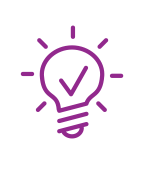 CONCEPT
CONCEPT
The global target covers several different concepts. Although affordability and quality are not directly measured by the global indicator, the main concept of “equal access” is assessed through the comparison of participation rates by sex.
 DEFINITION
DEFINITION
Percentage of youth and adults in a given age range (e.g. 15-24 years, 25-64 years, etc.) participating in formal or non-formal education or training in a given time period (e.g. last 12 months). Ideally, the indicator should be disaggregated by types of programme such as technical and vocational education and training (TVET), tertiary education, adult education and other relevant types, and cover both formal and nonformal programmes. Thanks to ISCED 2011, the methodology related to indicators of participation in formal education and training is sound and well-established throughout most countries. However, methods to measure participation in non-formal education and training vary substantially worldwide.
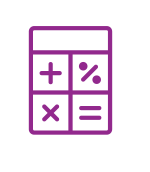 CALCULATION METHOD
CALCULATION METHOD
The number of people in selected age groups participating in formal or non-formal education or training is expressed as a percentage of the population of the same age.
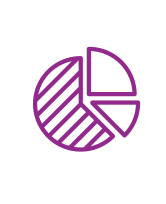 INTERPRETATION
INTERPRETATION
A high value indicates a large share of the population in the relevant age group is participating in formal and non-formal education and training.
 DATA SOURCES
DATA SOURCES
There are already methodologies implemented at national and international levels collecting data on Indicator 4.3.1. At the international level, surveys like the European Adult Education Survey (AES), the OECD Programme for the International Assessment of Adult Competencies (PIAAC) and the ILO Schoolto-Work Transition Survey (SWTS) generate periodical and comparable information. At the national level, National Household Surveys and Labour Force Surveys usually collect data on participation in formal and also non-formal education programmes, although data collection on participation in the latter type is much less common.
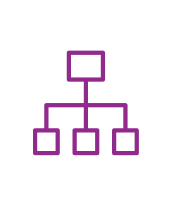 METHODOLOGICAL CHALLENGES
METHODOLOGICAL CHALLENGES
Formal and non-formal education and training can be offered in a variety of settings including schools and universities, workplace environments and other places, and can have a variety of durations. Administrative data often only capture provision in formal settings, such as schools and universities. Finally, participation rates do not capture the intensity or quality of the provision nor the outcomes of the education and training on offer.
TARGET 4.4
Technical and vocational skills
By 2030, substantially increase the number of youth and adults who have relevant skills, including technical and vocational skills, for employment, decent jobs and entrepreneurship.
Indicator 4.4.1
Proportion of youth/adults with information and communications technology (ICT) skills, by type of skill CONCEPT
CONCEPT
ICT skills determine the effective use of information and communication technology. The lack of such skills continues to be one of the key barriers keeping people, and in particular women, from fully benefitting from the potential of ICTs. The global indicator is based on the percentage of individuals with ICT skills by type of skill. It measures ICT skills based on the number of people who report to have undertaken certain computer-related activities in a given time period (usually during the last 12 months in the case of Eurostat or 3 months in the case of the International Telecommunications Union (ITU)).
 DEFINITION
DEFINITION
Percentage of youth (aged 15 to 24 years) and adults (aged 15 years and older) who have undertaken certain computer-related activities in a given period (e.g. last three months). Computer-related activities to measure ICT skills include:
- Copying or moving a file or folder
- Finding, downloading, installing and configuring software
- Using copy and paste tools to duplicate or move information within a document
- Creating electronic presentations with presentation software (including text, images, sound, video or charts)
- Sending e-mails with attached files (e.g.document, picture, video)
- Transferring files between a computer and other devices
- Using basic arithmetic formulae in a spreadsheet
- Writing a computer program using a specialised programming language
- Connecting and installing new devices (e.g. modem, camera, printer)
- A computer refers to a desktop computer, a laptop (portable) computer or a tablet (or similar handheld computer). It does not include equipment with some embedded computing abilities, such as smart television sets or cellular phones.
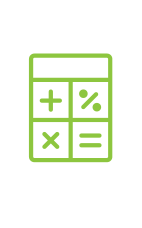 CALCULATION METHOD
CALCULATION METHOD
The indicator is calculated as the percentage of people in a given population who have responded ‘yes’ for each of the ICT skills measured.
 INTERPRETATION
INTERPRETATION
This indicator makes the link between ICT usage and impact, and helps measure and track the level of proficiency of users. A high value indicates that a large share of the reference population has the ICT skill being measured.
 DATA SOURCES
DATA SOURCES
The methodology was developed by Eurostat and adopted by the ITU. Eurostat collects these data annually for 32 European countries, while the ITU is responsible for setting up the standards and collecting this information from remaining countries.
 METHODOLOGICAL CHALLENGES
METHODOLOGICAL CHALLENGES
One of the main challenges with this indicator is its narrow coverage of “relevant skills” proposed by the target. In addition, the indicator is based on self-reported information. Those surveyed provide information on the types of activities they have undertaken but not their proficiency level. It is impossible to verify the accuracy of these self-assessments, and more importantly, there can be large differences in reporting between groups of different cultural and personal backgrounds. For example, women tend to underreport their abilities in using computers and the Internet, while men tend to overstate their abilities.
It is also very likely that someone from one country approaches the question differently from somebody from another country. In terms of population coverage, the target for youth and adults stresses the fact that young people specifically should be included in the measurement. Context is relevant and may be vastly different from one country to the next. Children in high-income countries may develop skills years ahead of those in low-income countries.
TARGET 4.5
Equal access to all levels of education and training for the vulnerable
By 2030, eliminate gender disparities in education and ensure equal access to all levels of education and vocational training for the vulnerable, including persons with disabilities, indigenous peoples and children in vulnerable situations.
Indicator 4.5.1
Parity indices (female/male, rural/urban, bottom/top wealth quintiles and others, such as disability status, indigenous peoples and conflict-affected, as data become available) for all education indicators on this list that can be disaggregated CONCEPT
CONCEPT
Equity is one of the most prominent features of the new international agenda. This term broadly refers to different concepts related to fairness and compensatory actions that recognise disadvantage. The parity index is the key indicator that will be used for global monitoring across all disaggregated indicators. As a result, equity-related indicators account for the largest share of the data needed to monitor SDG 4 as a whole.
 DEFINITION
DEFINITION
Parity indices require data for specific groups of interest. They represent the ratio of the indicator value for one group to the value for another group. Typically, the group more likely to be disadvantaged is in the numerator. A parity index of exactly 1 means that the indicator values of the two groups are identical, while by convention, values between 0.97 and 1.03 are interpreted to reflect parity between the two groups.
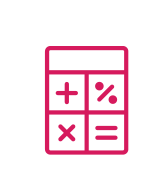 CALCULATION METHOD
CALCULATION METHOD
The indicator value of the likely more disadvantaged group is divided by the indicator value of the other sub-population of interest.
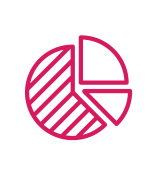 INTERPRETATION
INTERPRETATION
The further from 1 the parity index lies, the greater the disparity between the two groups of interest. The gender parity index (GPI) represents the ratio of the indicator value for girls to the value for boys. Therefore, the GPI for Country A’s Indicator 4.1.1b results from the division of the female value (50%) by the male value (30%), which is equal to 1.67. A value between 0.97 and 1.03 would reflect gender parity, while values below 0.97 show an advantage for boys and values above 1.03 reflect an advantage for girls.
 DATA SOURCES
DATA SOURCES
The sources for parity indices are the very indicators calculated for each of the other targets. However, not all data used by the global and thematic indicators allow the types of disaggregation required for the calculation of the parity indices.
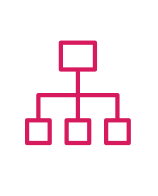 METHODOLOGICAL CHALLENGES
METHODOLOGICAL CHALLENGES
Efforts to produce data and indicators to monitor equity in education should not come at the expense of data quality, nor should they be disregarded because of vulnerable situations or scarce resources. To date, Member States have yet to fully integrate equity as part of their regular national monitoring of education, although the new impetus given by the SDGs triggers the need to develop a shared and agreed-upon strategy. This approach will require building consensus on the definition of equity, common metrics and standards, and coordination mechanisms to reduce transaction costs.
In response to the call for a greater focus on equity in the SDGs, the UIS, UNICEF and the World Bank have created the Inter-Agency Group on Education Inequality Indicators (IAG-EII). It aims to promote and coordinate the use of household survey data for monitoring at the national, regional and global levels. Better coordination will help ensure standardised reporting to complement information available through administrative data, typically collected by school systems. The IAG draws partly on the experience of the UIS/UNICEF Global Initiative on Out-of-School Children (OOSCI), which aimed to strengthen the evidence base for national education policymaking by combining data from multiple sources and identifying the characteristics of children and adolescents excluded from education.
TARGET 4.6
Youth and adult literacy and numeracy
By 2030, ensure that all youth and a substantial proportion of adults, both men and women, achieve literacy and numeracy.
Indicator 4.6.1
Proportion of a population in a given age group achieving at least a fixed level of proficiency in functional (a) literacy and (b) numeracy skills, by sex CONCEPT
CONCEPT
Key concepts to measure include proficiency in literacy and numeracy. For operational reasons, literacy has been very often restricted to the ability to read and write a simple statement, including some basic arithmetic skills (numeracy). However, this definition is simplistic and does not encompass adequately the complexity of these concepts. UNESCO has more recently suggested an improved definition of literacy as an “ability to identify, understand, interpret, create, communicate and compute, using printed and written materials associated with varying contexts. Literacy involves a continuum of learning in enabling individuals to achieve their goals, to develop their knowledge and potential, and to participate fully in their community and wider society”.
 DEFINITION
DEFINITION
Percentage of youth (aged 15 to 24 years) and of adults (aged 15 years and older) who have achieved or exceeded a given level of proficiency in (a) literacy and (b) numeracy. The minimum proficiency level will be measured relative to new common literacy and numeracy scales currently in development. The fixed level of proficiency is the benchmark of basic knowledge in a domain (literacy or numeracy) measured through learning assessments. Currently, there are no common standards validated by the international community or countries. Current data originate from agencies and organizations specialised in cross-national household-based assessment surveys of youth and adult populations.
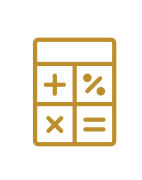 CALCULATION METHOD
CALCULATION METHOD
Percentage of youth and adults who have achieved at least the minimum threshold of proficiency as defined for large-scale (representative sample) adult literacy and numeracy assessments.
 INTERPRETATION
INTERPRETATION
There is only one threshold that divides youth and adults into below minimum or at or above minimum proficiency levels. Below minimum level is the percentage of youth and adults who have not achieved the minimum proficiency level as established by countries according to the globally-defined minimum competencies. At or above minimum level is the percentage of youth and adults who have achieved at least the minimum proficiency level.
 DATA SOURCES
DATA SOURCES
Data for this indicator are collected through skills assessment surveys of the adult population, e.g. PIAAC, Skills Towards Employment and Productivity (STEP) programme, Literacy Assessment and Monitoring Programme (LAMP), and national adult literacy and numeracy surveys. Only PIAAC measures both skills. STEP and the Short Literacy Survey (SLS) only measure literacy. Both PIAAC and STEP surveys can be put on a common scale as they are linked psychometrically by design.
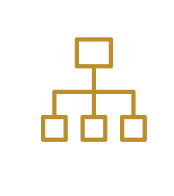 METHODOLOGICAL CHALLENGES
METHODOLOGICAL CHALLENGES
The measurement of youth and adult skills requires some form of direct assessment. Using householdbased assessment surveys to measure literacy and numeracy can be costly and difficult to administer and may underestimate functional skills in areas that are critical to daily life but are harder to assess in standardised approaches. The result may be inaccurate representations of what youth and adults know and can do, especially in relation to foundational skills that may vary widely across cultural contexts and orthography.
TARGET 4.7
Knowledge and skills needed to promote sustainable development
By 2030, ensure that all learners acquire the knowledge and skills needed to promote sustainable development, including, among others, through education for sustainable development and sustainable lifestyles, human rights, gender equality, promotion of a culture of peace and non-violence, global citizenship and appreciation of cultural diversity and of culture’s contribution to sustainable development.
Indicator 4.7.1
Extent to which (i) global citizenship education and (ii) education for sustainable development, including gender equality and human rights, are mainstreamed at all levels in: (a) national education policies; (b) curricula; (c) teacher education; and (d) student assessment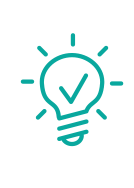 CONCEPT
CONCEPT
This indicator provides information on the level of national commitment towards the attainment of Target 4.7 (for example, whether political will and resources have been translated into concrete policies, curricula and assessment). This indicator can be complemented by other thematic indicators on global citizenship education (GCED) and education for sustainable development (ESD), which seek to assess learning outcomes more directly in the cognitive, socio-emotional and behavioural domains. The indicator could be used to assess inputs to formal as well as non-formal education systems.
 DEFINITION
DEFINITION
The extent to which countries mainstream GCED and ESD, including climate change education, human rights and gender equality, in their education systems, specifically in policies, curricula, teacher education and student assessment. This indicator seeks to measure the quantity and quality of country inputs, as well as whether the quality of GCED and ESD provision is adequate to fulfil their transformational potential. The indicator goes beyond the level of ‘existence’ or ‘mentioning’ of GCED and ESD in policy, curricula, teacher education and student assessment. ESD empowers learners to take informed decisions and responsible actions for environmental integrity, economic viability and a just society, for present and future generations, while respecting cultural diversity. It is about lifelong learning and is an integral part of quality education. GCED nurtures respect for all, building a sense of belonging to a common humanity and helping learners become responsible and active global citizens. GCED aims to empower learners to assume active roles to face and resolve global challenges and to become proactive contributors to a more peaceful, tolerant, inclusive and secure world.
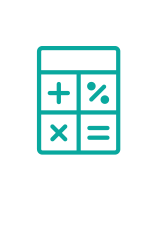 CALCULATION METHOD
CALCULATION METHOD
This indicator is based on an evaluation of reports submitted by countries to UNESCO describing how they mainstream GCED and ESD in their education policies and systems.
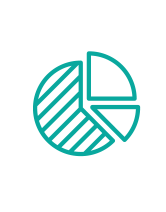 INTERPRETATION
INTERPRETATION
Progress might be interpreted by the priority and emphasis given to the implementation of GCED and ESD in policies, curricula, teacher training and student assessments over time, i.e. if the existence, frequency, priority and scope of implementation change from one data collection to the next.
 DATA SOURCES
DATA SOURCES
In reference to UNESCO’s mandate to monitor the implementation of the 1974 Recommendation concerning Education for International Understanding, Cooperation and Peace and Education relating to Human Rights and Fundamental Freedoms, every four years a questionnaire is sent to UNESCO Member States. This is an established mechanism, on the basis of which countries systematically report to UNESCO on the status of implementation of the 1974 Recommendation; the questionnaire covers almost all aspects of the proposed indicator, as per the specific recommendations. UNESCO analyses the survey results and reports to its General Conference on country status. In 2016, UNESCO revised the terminologies and the format of the survey tool to make it more relevant and easy to use, which will increase the response rate.
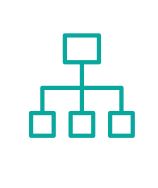 METHODOLOGICAL CHALLENGES
METHODOLOGICAL CHALLENGES
The indicator does not show whether national measures lead to desired changes in learning outcomes and does not assess learning outcomes directly. However, education policies, curricula, teacher education and student assessment are key intermediate outcomes of national commitment and effort to effectively implement GCED and ESD and to provide a conducive learning environment.
TARGET 4.a
School environment
Build and upgrade education facilities that are child, disability and gender sensitive and provide safe, non-violent, inclusive and effective learning environments for all.
Indicator 4.a.1
Proportion of schools with access to: (a) electricity; (b) the Internet for pedagogical purposes; (c) computers for pedagogical purposes; (d) adapted infrastructure and materials for students with disabilities; (e) basic drinking water; (f) single-sex basic sanitation facilities; and (g) basic handwashing facilities (as per the WASH indicator definitions) DEFINITION
DEFINITION
Percentage of schools by level of education (primary, lower secondary and upper secondary education) with access to the given facility or service. For the definitions of each facility or service, please refer to Metadata for global and thematic indicators for the follow-up and review of SDG 4 and Education 2030 (UIS, 2017a).
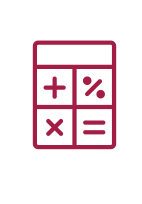 CALCULATION METHOD
CALCULATION METHOD
The number of schools in a given level of education with access to the relevant facilities is expressed as a percentage of all schools at that level of education.
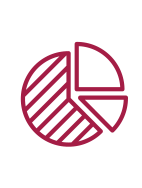 INTERPRETATION
INTERPRETATION
A high value indicates that schools have good access to the relevant services and facilities. Ideally, each school should have access to all these services and facilities.
 DATA SOURCES
DATA SOURCES
Administrative data from schools and other providers of education or training.
TARGET 4.b
Scholarships
By 2020, substantially expand globally the number of scholarships available to developing countries, in particular least developed countries, small island developing States and African countries, for enrolment in higher education, including vocational training and information and communications technology, technical, engineering and scientific programmes, in developed countries and other developing countries.
Indicator 4.b.1
Volume of official development assistance flows for scholarships by sector and type of study DEFINITION
DEFINITION
Gross disbursements of total net official development assistance (ODA) for scholarships in donor countries expressed in US dollars at the average annual exchange rate.
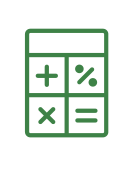 CALCULATION METHOD
CALCULATION METHOD
The sum of total ODA for scholarships for study abroad by sector and type of study awarded to students from the beneficiary country expressed in US dollars.
 INTERPRETATION
INTERPRETATION
A high value indicates that there is greater expenditure on students from the given beneficiary country to study abroad. It does not indicate the number of students being supported.
 DATA SOURCES
DATA SOURCES
Administrative data from donor countries and other aid providers on gross disbursements of total ODA to education. Data are compiled by the Development Assistance Committee (DAC) of the OECD from returns submitted by its member countries and other aid providers.
TARGET 4.c
Teachers
By 2030, substantially increase the supply of qualified teachers, including through international cooperation for teacher training in developing countries, especially least developed countries and small island developing States.
Indicator 4.c.1
Proportion of teachers in: (a) pre-primary education; (b) primary education; (c) lower secondary education; and (d) upper secondary education who have received at least the minimum organized teacher training (e.g. pedagogical training) pre-service or in-service required for teaching at the relevant level in a given country, by sex DEFINITION
DEFINITION
Percentage of teachers by level of education taught (pre-primary, primary, lower secondary and upper secondary education) who have received at least the minimum organized pedagogical teacher training pre-service and in-service required for teaching at the relevant level in a given country. Ideally, the indicator should be calculated separately for public and private institutions.
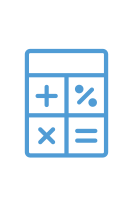 CALCULATION METHOD
CALCULATION METHOD
The number of teachers in a given level of education who are trained is expressed as a percentage of all teachers in that level of education.
 INTERPRETATION
INTERPRETATION
A high value indicates that students are being taught by teachers who are pedagogically well-trained to teach.
 DATA SOURCES
DATA SOURCES
Administrative data from schools and other organized learning centres.
TARGET 4.1
Free, equitable and quality
primary and secondary education
By 2030, ensure that all girls and boys complete free, equitable and
quality primary and secondary education leading to relevant and effective
learning outcomes.
Indicator 4.1.1
Proportion of children and young people (a) in Grade 2 or 3; (b) at the end of primary education; and (c) at the end of lower secondary education achieving at least a minimum
proficiency level in (i) reading and (ii) mathematics, by sex.
 CONCEPT
CONCEPT
Target 4.1 covers the quality of primary and lower secondary education. The key concepts to measure include the quality of education and learning in two subject areas at the beginning and the end of primary education and at the end of lower secondary education.Minimum proficiency level (MPL) is the benchmark of basic knowledge in a domain (mathematics,reading, etc.) measured through learning assessments.
 DEFINITION
DEFINITION
Percentage of children and young people in Grade 2 or 3 of primary education, at the end of primary education and at the end of lower secondary education achieving at least a minimum proficiency level in (i) reading and (ii) mathematics. The minimum proficiency level will be measured relative to new common reading and mathematics scales currently in development.The current indicator shows data published by each of the agencies and organizations specialised in cross-national learning assessments. Data are comparable only for countries which participated in the same assessment. Methods to compare the results from different cross-national learning assessments are in development.
 CALCULATION METHOD
CALCULATION METHOD
The indicator is calculated as the percentage of children and young people at the relevant stage of education achieving or exceeding a pre-defined proficiency level in a given subject.
INTERPRETATION
The three measurement points will have their own established minimum standard. There is only one threshold that divides students into (a) below or (b) at or above minimum proficiency levels. Below minimum is the percentage of students who do not achieve a minimum proficiency level as established by countries according to globally-defined minimum competencies. At or above minimum is the percentage of students who have achieved at least the minimum proficiency level as defined in the
assessment.
UIS Information Paper No. 48 (2017d) discusses the possibilities and limitations of developing a global assessment strategy for Indicator 4.1.1, taking into account both the technical and political dimensions of cross-national assessments.
 DATA SOURCES
DATA SOURCES
Various cross-national learning assessments including: PASEC, PIRLS, PISA, SACMEQ, TERCE and TIMSS.
The document “Metadata for the global and thematic indicators for the follow-up and review of SDG 4 and Education 2030” is the main UIS reference for information on each SDG 4 indicator. The metadata document, updated every year, provides a detailed description of the indicators, as well as their calculation methods, data sources and limitations (UIS, 2017a).
 METHODOLOGICAL CHALLENGES
METHODOLOGICAL CHALLENGES
There are three key challenges in the production of learning outcomes indicators on a cross-nationally comparable basis. First, national, regional and global data on basic competencies in literacy and numeracy are frequently collected but cannot be used in an integrated manner to create a global picture of learning. For instance, the proficiency of Brazilian students can be compared to the Paraguayan students as both countries have participated in the same regional assessment. However, their proficiency
cannot be compared to South African students because the regional assessment in which South Africa participates does not use the same framework, which is based on different concepts and methods of how to assess learning.
Second, if national and regional data are to be used for global monitoring of learning, shared technical standards must be developed to ensure that the data are of similar quality.
Third, solutions must take into account multiple viewpoints: identifying relevant areas of learning that can and should be measured globally; conceptualising how national and regional data can help inform global measurement; and finally, striking an appropriate balance between global competencies and the role of local influences and goals on education.
The goal of the UIS is to develop global content frameworks for reference to ensure that all children are taught what they need, to improve the quality of data and to report under common metrics. This work will support governments to measure effectively and monitor student learning outcomes in mathematics and reading against SDG Indicator 4.1.1 over time and to utilise the data for making informed policy decisions. A further goal is to support the use of existing national and cross-national assessments to
facilitate the measurement and reporting of learning outcomes, rather than requiring a single assessment to be used by all countries for SDG reporting purposes.
In addition to the challenges mentioned above, it is important to note a significant limitation of the data available. Assessments are typically administered within school systems, referred to as school-based learning assessments. The current indicators cover only children in school. Therefore, children who are out of school are not included in this indicator. Assessing competencies of children and young people who are out of school would require household-based surveys.
The UIS has developed a framework to guide the design and implementation of learning assessments to support the production of measures of learning outcomes according to the highest-quality technical standards. Principles of Good Practice in Learning Assessment is a good reference for data quality
on learning outcomes (UIS and ACER, 2017).
TARGET 4.2
Quality early childhood
development, care and
pre-primary education
By 2030, ensure that all girls and boys have access to quality early childhood development, care and pre-primary education so that they are ready for primary education.
Indicator 4.2.1
Proportion of children under 5 years of age who are developmentally on track in health, learning and psychosocial well-being, by sex
 CONCEPT
CONCEPT
Key concepts to measure include quality of care and education, access to programmes and child development and learning at the start of school. Measuring early childhood development is complicated but possible with sufficient technical consultation and operational support to countries to generate reliable data.
 DEFINITION
DEFINITION
Currently there is no globally-accepted definition of ‘developmentally on track’, and consequently, there are no further definitions for the indicator so far. Relevant information for this indicator can be found in MICS’ Early Childhood Development Index (ECDI) that presently defines ‘on track’ as the percentage of children aged 36 to 59 months who are developmentally on track in at least three of the following four domains:
- literacy-numeracy—at least two of the following are true: can identify/name at least 10 letters of the
alphabet, can read at least 4 simple words, and can recognise and name all numbers from 1 to 10; - physical—one or both of the following are true: can pick up small objects easily and is generally well
enough to play; - socio-emotional—at least two of the following are true: gets along well with other children, does not
kick, bite or hit other children, and is not easily distracted; and - learning —one or both of the following are true: can follow simple instructions on how to do
something correctly and, when given something to do, is able to do it independently.
 CALCULATION METHOD
CALCULATION METHOD
In MICS ECDI, the indicator is calculated as the percentage of children aged 36 to 59 months demonstrating age-appropriate levels of development in the areas being measured. A commonly-accepted definition of ‘on track’ has not yet been developed using national and regionally-developed standards for children’s learning and development.
 INTERPRETATION
INTERPRETATION
A high value indicates a large number of young children are well prepared for starting primary school in the areas of health, learning and psychosocial well-being.
 DATA SOURCES
DATA SOURCES
Measures to capture children’s early childhood experiences have been used in multiple countries in representative samples, such as: MICS ECDI, UNICEF West and Central African Regional Office (WCARO) Prototype in West Africa, Programa Regional de Indicadores de Desarrollo Infantil (PRIDI) in Latin America, the East Asia and Pacific Child Development Scales, the Early Development Index and the Early Human Capacity Index. Newly-developed scales with two to three representative samples include the Measuring Early Learning Quality and Outcomes Scale (MELQO) and the International Development and Early Learning Assessment (IDELA).
UNICEF assists countries in collecting and analysing data in order to fill data gaps for monitoring the situation of children and women through its international household-survey initiative, the MICS. For the fourth round of MICS (MICS 4), data collection was expanded to include an ECDI that aims to measure the developmental status of children within four domains: literacy-numeracy, physical, social-emotional development and learning.
 METHODOLOGICAL CHALLENGES
METHODOLOGICAL CHALLENGES
Further methodological development work will be needed to ensure that the proposed measure reflects a commonly-agreed upon definition of ‘on track’ that is aligned with national standards, is relevant to children in all parts of the world and accurately reflects ‘developmentally on track’ in all countries. This requires establishing normative developmental patterns, which has not yet taken place in most countries. In addition, more countries will need to include questions about early childhood in their national household surveys or to participate in one of the international projects generating data for this indicator.
Indicator 4.2.2
Participation rate in organized learning (one year before the official primary entry age), by sex
 CONCEPT
CONCEPT
This indicator measures children’s exposure to organized learning activities in the year prior to the start of primary school. An organized learning programme is one which consists of a coherent set or sequence of educational activities designed with the intention of achieving pre-determined learning outcomes or the accomplishment of a specific set of educational tasks. Early childhood and primary education programmes are examples of organized learning programmes. The official primary entry age is the age at which children are obliged to start primary education according to national legislation or policies.
 DEFINITION
DEFINITION
The participation rate in organized learning (one year before the official primary entry age) is defined as the percentage of children of the given age who participate in one or more organized learning programmes, including programmes which offer a combination of education and care. Participation in early childhood and in primary education are both included. The age will vary by country depending on the official age for entry to primary education.
 CALCULATION METHOD
CALCULATION METHOD
The number of children in the relevant age group who participate in an organized learning programme is expressed as a percentage of the total population of the same age.
 INTERPRETATION
INTERPRETATION
A high value of the indicator shows a high degree of participation in organized learning immediately before the official entrance age to primary education.
 DATA SOURCES
DATA SOURCES
The UIS produces time series based on enrolment data reported by Ministries of Education or national statistical offices and population estimates produced by the UN Population Division. Enrolment data are collected through the annual UIS Survey of Formal Education. Data are reported according to the levels of education defined in ISCED to ensure international comparability of resulting indicators. The indicator can also be calculated from household surveys and population censuses that collect data on attendance in early childhood and primary education by single year of age.
 METHODOLOGICAL CHALLENGES
METHODOLOGICAL CHALLENGES
Participation in learning programmes in the early years is not full time for many children, meaning that exposure to learning environments outside of the home will vary in intensity. The indicator measures the percentage of children who are exposed to organized learning but not the intensity of the programme, which limits the ability to draw conclusions on the extent to which this target is being achieved. More work is needed to ensure that the definition of learning programmes is consistent across various surveys and defined in a manner that is easily understood by survey respondents, ideally with complementary information collected on the amount of time children spend in learning programmes.
TARGET 4.3
Quality TVET and tertiary
education
By 2030, ensure equal access for all women and men to affordable and
quality technical, vocational and tertiary education, including university.
Indicator 4.3.1
Participation rate of youth and adults in formal and non-formal education and training in the previous 12 months,by sex
 CONCEPT
CONCEPT
The global target covers several different concepts. Although affordability and quality are not directly measured by the global indicator, the main concept of “equal access” is assessed through the comparison of participation rates by sex.
 DEFINITION
DEFINITION
Percentage of youth and adults in a given age range (e.g. 15-24 years, 25-64 years, etc.) participating in formal or non-formal education or training in a given time period (e.g. last 12 months). Ideally, the indicator should be disaggregated by types of programme such as technical and vocational education and training (TVET), tertiary education, adult education and other relevant types, and cover both formal and nonformal programmes. Thanks to ISCED 2011, the methodology related to indicators of participation in formal education and training is sound and well-established throughout most countries. However, methods to measure participation in non-formal education and training vary substantially worldwide.
 CALCULATION METHOD
CALCULATION METHOD
The number of people in selected age groups participating in formal or non-formal education or training is expressed as a percentage of the population of the same age.
 INTERPRETATION
INTERPRETATION
A high value indicates a large share of the population in the relevant age group is participating in formal and non-formal education and training.
 DATA SOURCES
DATA SOURCES
There are already methodologies implemented at national and international levels collecting data on Indicator 4.3.1. At the international level, surveys like the European Adult Education Survey (AES), the OECD Programme for the International Assessment of Adult Competencies (PIAAC) and the ILO Schoolto-Work Transition Survey (SWTS) generate periodical and comparable information. At the national level, National Household Surveys and Labour Force Surveys usually collect data on participation in formal
and also non-formal education programmes, although data collection on participation in the latter type is much less common.
 METHODOLOGICAL CHALLENGES
METHODOLOGICAL CHALLENGES
Formal and non-formal education and training can be offered in a variety of settings including schools and universities, workplace environments and other places, and can have a variety of durations. Administrative data often only capture provision in formal settings, such as schools and universities. Finally, participation rates do not capture the intensity or quality of the provision nor the outcomes of the education and training on offer.
TARGET 4.4
By 2030, substantially increase the number of youth and adults who have
relevant skills, including technical and vocational skills, for employment,
decent jobs and entrepreneurship.
Indicator 4.4.1
Proportion of youth/adults with information and communications technology (ICT) skills, by type of skill
 CONCEPT
CONCEPT
ICT skills determine the effective use of information and communication technology. The lack of such skills continues to be one of the key barriers keeping people, and in particular women, from fully benefitting from the potential of ICTs. The global indicator is based on the percentage of individuals with ICT skills by type of skill. It measures ICT skills based on the number of people who report to have undertaken certain computer-related activities in a given time period (usually during the last 12 months in the case of
Eurostat or 3 months in the case of the International Telecommunications Union (ITU)).
 DEFINITION
DEFINITION
Percentage of youth (aged 15 to 24 years) and adults (aged 15 years and older) who have undertaken certain computer-related activities in a given period (e.g. last three months). Computer-related activities to measure ICT skills include:
- Copying or moving a file or folder
- Finding, downloading, installing and
configuring software - Using copy and paste tools to duplicate or
move information within a document - Creating electronic presentations with
presentation software (including text, images,
sound, video or charts) - Sending e-mails with attached files (e.g.document, picture, video)
- Transferring files between a computer and
other devices - Using basic arithmetic formulae in a
spreadsheet - Writing a computer program using a
specialised programming language - Connecting and installing new devices (e.g.
modem, camera, printer) - A computer refers to a desktop computer, a laptop (portable) computer or a tablet (or similar handheld
computer). It does not include equipment with some embedded computing abilities, such as smart
television sets or cellular phones.
 CALCULATION METHOD
CALCULATION METHOD
The indicator is calculated as the percentage of people in a given population who have responded ‘yes’ for each of the ICT skills measured.
 INTERPRETATION
INTERPRETATION
This indicator makes the link between ICT usage and impact, and helps measure and track the level of proficiency of users. A high value indicates that a large share of the reference population has the ICT skill being measured.
 DATA SOURCES
DATA SOURCES
The methodology was developed by Eurostat and adopted by the ITU. Eurostat collects these data annually for 32 European countries, while the ITU is responsible for setting up the standards and collecting this information from remaining countries.
 METHODOLOGICAL CHALLENGES
METHODOLOGICAL CHALLENGES
One of the main challenges with this indicator is its narrow coverage of “relevant skills” proposed by the target. In addition, the indicator is based on self-reported information. Those surveyed provide information on the types of activities they have undertaken but not their proficiency level. It is impossible to verify the accuracy of these self-assessments, and more importantly, there can be large differences in reporting between groups of different cultural and personal backgrounds. For example, women tend to underreport their abilities in using computers and the Internet, while men tend to overstate their abilities.
It is also very likely that someone from one country approaches the question differently from somebody from another country. In terms of population coverage, the target for youth and adults stresses the fact that young people specifically should be included in the measurement. Context is relevant and may be vastly different from one country to the next. Children in high-income countries may develop skills years ahead of those in low-income countries.
TARGET 4.5
Equal access to all levels of
education and training for
the vulnerable
By 2030, eliminate gender disparities in education and ensure equal
access to all levels of education and vocational training for the vulnerable,
including persons with disabilities, indigenous peoples and children in
vulnerable situations.
Indicator 4.5.1
Parity indices (female/male, rural/urban, bottom/top wealth quintiles and others, such as disability status, indigenous peoples and conflict-affected, as data become available) for all education indicators on this list that can be disaggregated
 CONCEPT
CONCEPT
Equity is one of the most prominent features of the new international agenda. This term broadly refers to different concepts related to fairness and compensatory actions that recognise disadvantage. The parity index is the key indicator that will be used for global monitoring across all disaggregated indicators. As a result, equity-related indicators account for the largest share of the data needed to monitor SDG 4 as a whole.
 DEFINITION
DEFINITION
Parity indices require data for specific groups of interest. They represent the ratio of the indicator value for one group to the value for another group. Typically, the group more likely to be disadvantaged is in the numerator. A parity index of exactly 1 means that the indicator values of the two groups are identical, while by convention, values between 0.97 and 1.03 are interpreted to reflect parity between the two groups.
 CALCULATION METHOD
CALCULATION METHOD
The indicator value of the likely more disadvantaged group is divided by the indicator value of the other sub-population of interest.
 INTERPRETATION
INTERPRETATION
The further from 1 the parity index lies, the greater the disparity between the two groups of interest.
The gender parity index (GPI) represents the ratio of the indicator value for girls to the value for boys. Therefore, the GPI for Country A’s Indicator 4.1.1b results from the division of the female value (50%) by the male value (30%), which is equal to 1.67. A value between 0.97 and 1.03 would reflect gender parity, while values below 0.97 show an advantage for boys and values above 1.03 reflect an advantage for girls.
 DATA SOURCES
DATA SOURCES
The sources for parity indices are the very indicators calculated for each of the other targets. However, not all data used by the global and thematic indicators allow the types of disaggregation required for the calculation of the parity indices.
 METHODOLOGICAL CHALLENGES
METHODOLOGICAL CHALLENGES
Efforts to produce data and indicators to monitor equity in education should not come at the expense of data quality, nor should they be disregarded because of vulnerable situations or scarce resources. To date, Member States have yet to fully integrate equity as part of their regular national monitoring of education, although the new impetus given by the SDGs triggers the need to develop a shared and agreed-upon strategy. This approach will require building consensus on the definition of equity, common metrics and standards, and coordination mechanisms to reduce transaction costs.
In response to the call for a greater focus on equity in the SDGs, the UIS, UNICEF and the World Bank have created the Inter-Agency Group on Education Inequality Indicators (IAG-EII). It aims to promote and coordinate the use of household survey data for monitoring at the national, regional and global levels. Better coordination
will help ensure standardised reporting to complement information available through administrative data, typically collected by school systems.
The IAG draws partly on the experience of the UIS/UNICEF Global Initiative on Out-of-School Children (OOSCI), which aimed to strengthen the evidence base for national education policymaking by combining data from multiple sources and identifying the characteristics of children and adolescents excluded from education.
TARGET 4.6
Youth and adult literacy
and numeracy
By 2030, ensure that all youth and a substantial proportion of adults, both
men and women, achieve literacy and numeracy.
Indicator 4.6.1
Proportion of a population in a given age group achieving at least a fixed level of proficiency in functional (a) literacy and (b) numeracy skills, by sex
 CONCEPT
CONCEPT
Key concepts to measure include proficiency in literacy and numeracy. For operational reasons, literacy has been very often restricted to the ability to read and write a simple statement, including some basic arithmetic skills (numeracy). However, this definition is simplistic and does not encompass adequately the complexity of these concepts. UNESCO has more recently suggested an improved definition of literacy as an “ability to identify, understand, interpret, create, communicate and compute, using printed and
written materials associated with varying contexts. Literacy involves a continuum of learning in enabling individuals to achieve their goals, to develop their knowledge and potential, and to participate fully in their community and wider society”.
 DEFINITION
DEFINITION
Percentage of youth (aged 15 to 24 years) and of adults (aged 15 years and older) who have achieved or exceeded a given level of proficiency in (a) literacy and (b) numeracy. The minimum proficiency level will be measured relative to new common literacy and numeracy scales currently in development. The fixed level of proficiency is the benchmark of basic knowledge in a domain (literacy or numeracy) measured through learning assessments. Currently, there are no common standards validated by the international community or countries. Current data originate from agencies and organizations specialised in cross-national household-based assessment surveys of youth and adult populations.
 CALCULATION METHOD
CALCULATION METHOD
Percentage of youth and adults who have achieved at least the minimum threshold of proficiency as defined for large-scale (representative sample) adult literacy and numeracy assessments.
 INTERPRETATION
INTERPRETATION
There is only one threshold that divides youth and adults into below minimum or at or above minimum proficiency levels. Below minimum level is the percentage of youth and adults who have not achieved the minimum proficiency level as established by countries according to the globally-defined minimum competencies. At or above minimum level is the percentage of youth and adults who have achieved at least the minimum proficiency level.
 DATA SOURCES
DATA SOURCES
Data for this indicator are collected through skills assessment surveys of the adult population, e.g. PIAAC, Skills Towards Employment and Productivity (STEP) programme, Literacy Assessment and Monitoring Programme (LAMP), and national adult literacy and numeracy surveys. Only PIAAC measures both skills. STEP and the Short Literacy Survey (SLS) only measure literacy. Both PIAAC and STEP surveys can be put on a common scale as they are linked psychometrically by design.
 METHODOLOGICAL CHALLENGES
METHODOLOGICAL CHALLENGES
The measurement of youth and adult skills requires some form of direct assessment. Using householdbased assessment surveys to measure literacy and numeracy can be costly and difficult to administer and may underestimate functional skills in areas that are critical to daily life but are harder to assess in standardised approaches. The result may be inaccurate representations of what youth and adults know and can do, especially in relation to foundational skills that may vary widely across cultural contexts and orthography.
TARGET 4.7
Knowledge and skills needed
to promote sustainable
development
By 2030, ensure that all learners acquire the knowledge and skills needed to promote sustainable development, including, among others, through education for sustainable development and sustainable lifestyles, human rights, gender equality, promotion of a culture of peace and non-violence,
global citizenship and appreciation of cultural diversity and of culture’s contribution to sustainable development.
Indicator 4.7.1
Extent to which (i) global citizenship education and (ii) education for sustainable development, including gender equality and human rights, are mainstreamed at all levels in: (a) national education policies; (b) curricula; (c) teacher education; and (d) student assessment
 CONCEPT
CONCEPT
This indicator provides information on the level of national commitment towards the attainment of Target 4.7 (for example, whether political will and resources have been translated into concrete policies, curricula and assessment). This indicator can be complemented by other thematic indicators on global citizenship education (GCED) and education for sustainable development (ESD), which seek to assess learning outcomes more directly in the cognitive, socio-emotional and behavioural domains. The indicator could be used to assess inputs to formal as well as non-formal education systems.
 DEFINITION
DEFINITION
The extent to which countries mainstream GCED and ESD, including climate change education, human rights and gender equality, in their education systems, specifically in policies, curricula, teacher education and student assessment.
This indicator seeks to measure the quantity and quality of country inputs, as well as whether the quality of GCED and ESD provision is adequate to fulfil their transformational potential. The indicator goes beyond the level of ‘existence’ or ‘mentioning’ of GCED and ESD in policy, curricula, teacher education and student assessment. ESD empowers learners to take informed decisions and responsible actions for environmental integrity, economic viability and a just society, for present and future generations, while respecting cultural diversity. It is about lifelong learning and is an integral part of quality education. GCED nurtures respect for all, building a sense of belonging to a common humanity and helping learners become responsible and active global citizens. GCED aims to empower learners to assume active roles to face and resolve global challenges and to become proactive contributors to a more peaceful, tolerant, inclusive and secure world.
 CALCULATION METHOD
CALCULATION METHOD
This indicator is based on an evaluation of reports submitted by countries to UNESCO describing how they mainstream GCED and ESD in their education policies and systems.
 INTERPRETATION
INTERPRETATION
Progress might be interpreted by the priority and emphasis given to the implementation of GCED and ESD in policies, curricula, teacher training and student assessments over time, i.e. if the existence, frequency, priority and scope of implementation change from one data collection to the next.
 DATA SOURCES
DATA SOURCES
In reference to UNESCO’s mandate to monitor the implementation of the 1974 Recommendation concerning Education for International Understanding, Cooperation and Peace and Education relating to Human Rights and Fundamental Freedoms, every four years a questionnaire is sent to UNESCO Member States. This is an established mechanism, on the basis of which countries systematically report to UNESCO on the status of implementation of the 1974 Recommendation; the questionnaire covers
almost all aspects of the proposed indicator, as per the specific recommendations. UNESCO analyses the survey results and reports to its General Conference on country status. In 2016, UNESCO revised the terminologies and the format of the survey tool to make it more relevant and easy to use, which will
increase the response rate.
 METHODOLOGICAL CHALLENGES
METHODOLOGICAL CHALLENGES
The indicator does not show whether national measures lead to desired changes in learning outcomes and does not assess learning outcomes directly. However, education policies, curricula, teacher education and student assessment are key intermediate outcomes of national commitment and effort to effectively implement GCED and ESD and to provide a conducive learning environment.
4.a
School environment
Build and upgrade education facilities that are child, disability and gender sensitive
and provide safe, non-violent, inclusive and effective learning environments for all.
Indicator 4.a.1
Proportion of schools with access to: (a) electricity; (b) the Internet for pedagogical purposes; (c) computers for pedagogical purposes; (d) adapted infrastructure and materials for students with disabilities; (e) basic drinking water; (f) single-sex basic sanitation facilities; and (g) basic handwashing facilities (as per the WASH indicator definitions)
 DEFINITION
DEFINITION
Percentage of schools by level of education (primary, lower secondary and upper secondary education) with access to the given facility or service. For the definitions of each facility or service, please refer to Metadata for global and thematic indicators for the follow-up and review of SDG 4 and Education 2030 (UIS, 2017a).
 CALCULATION METHOD
CALCULATION METHOD
The number of schools in a given level of education with access to the relevant facilities is expressed as
a percentage of all schools at that level of education.
 INTERPRETATION
INTERPRETATION
A high value indicates that schools have good access to the relevant services and facilities. Ideally, each
school should have access to all these services and facilities.
 DATA SOURCES
DATA SOURCES
Administrative data from schools and other providers of education or training.
4.b Scholarships
By 2020, substantially expand globally the number of scholarships available to developing countries, in particular least developed countries, small island developing States and African countries, for enrolment in higher education, including vocational training and information and communications technology, technical, engineering and scientific programmes, in developed countries and other developing countries.
Indicator 4.b.1
Volume of official development assistance flows for scholarships by sector and type of study
 DEFINITION
DEFINITION
Gross disbursements of total net official development assistance (ODA) for scholarships in donor countries expressed in US dollars at the average annual exchange rate.
 CALCULATION METHOD
CALCULATION METHOD
The sum of total ODA for scholarships for study abroad by sector and type of study awarded to students from the beneficiary country expressed in US dollars.
 INTERPRETATION
INTERPRETATION
A high value indicates that there is greater expenditure on students from the given beneficiary country to study abroad. It does not indicate the number of students being supported.
 DATA SOURCES
DATA SOURCES
Administrative data from donor countries and other aid providers on gross disbursements of total ODA to education. Data are compiled by the Development Assistance Committee (DAC) of the OECD from returns submitted by its member countries and other aid providers.
4.c
Teachers
By 2030, substantially increase the supply of qualified teachers, including through international cooperation for teacher training in developing countries, especially least developed countries and small island developing States.
Indicator 4.c.1
Proportion of teachers in: (a) pre-primary education; (b) primary education; (c) lower secondary education; and (d) upper secondary education who have received at least the minimum organized teacher training (e.g. pedagogical training) pre-service or in-service required for teaching at the relevant level in a given country, by sex
 DEFINITION
DEFINITION
Percentage of teachers by level of education taught (pre-primary, primary, lower secondary and upper secondary education) who have received at least the minimum organized pedagogical teacher training pre-service and in-service required for teaching at the relevant level in a given country. Ideally, the indicator should be calculated separately for public and private institutions.
 CALCULATION METHOD
CALCULATION METHOD
The number of teachers in a given level of education who are trained is expressed as a percentage of all teachers in that level of education.
 INTERPRETATION
INTERPRETATION
A high value indicates that students are being taught by teachers who are pedagogically well-trained to teach.
 DATA SOURCES
DATA SOURCES
Administrative data from schools and other organized learning centres.

